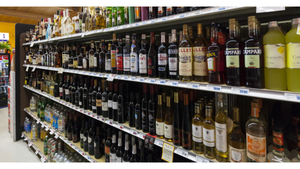CLINTON EGG STRATEGY DRAWS SUPPORT
WASHINGTON -- The nation's egg producers expressed tentative support last week for the Clinton Administration's latest proposal to reduce cases of salmonella poisoning stemming from egg consumption 50% by the year 2005.But producers held back full endorsement until they learn more details about the requirements.Al Pope, president of United Egg Producers, Washington, stated that the President's Council
December 20, 1999
ROBERT VOSBURGH
WASHINGTON -- The nation's egg producers expressed tentative support last week for the Clinton Administration's latest proposal to reduce cases of salmonella poisoning stemming from egg consumption 50% by the year 2005.
But producers held back full endorsement until they learn more details about the requirements.
Al Pope, president of United Egg Producers, Washington, stated that the President's Council on Food Safety's proposal relies largely on voluntary measures already employed by processors. Under the new plan, egg suppliers would implement one of two protocols requiring rigorous "farm-to-table" testing and monitoring.
"The Administration's Egg Safety Plan is incorporating many of the egg industry's programs it has implemented on a voluntary basis for years," he said.
The "proactive" measures taken by UEP member suppliers include a five-star voluntary quality-assurance program, which the organization said could be used as a nationwide blueprint. Additionally, the industry initiated and continues to conduct education programs for consumers and food-service workers in the proper handling and cooking of eggs, Pope said.
In a recent radio address, President Clinton proposed a two-track strategy to reduce cases of egg-related salmonella enteritidis. One uses on-farm agricultural and sanitation practices and extensive testing for SE. Also, eggs testing positive would be pasteurized or used in cooked product. The other strategy requires implementation of new technologies to kill the potentially dangerous organism, such as in-shell pasteurization, at the packer stage of production.
Both strategies should improve the safety of shell eggs and processed egg products, government officials said. But Pope said the industry wants to see specifics before agreeing to the plan.
"We need to know the plan details regarding the amount of testing required, as well as the specifications for laboratories on how and when to test flocks, before we can embrace the program," he said.
The plan also seeks to consolidate egg-safety oversight. The Department of Health and Human Services' Food and Drug Administration and the Food Safety and Inspection Service of the the Department of Agriculture share federal regulatory responsibility for egg safety. Under the plan, the FDA would develop and implement "consistent, nationwide on-farm preventive controls" and enforce them by contracting with the states while maintaining federal oversight. The FSIS would develop and enforce standards at the packer/processor level. The Centers for Disease Control and Prevention, Atlanta, and the FDA would conduct surveillance and monitoring activities, according to officials.
The action plan is the latest in a series of Clinton Administration advances to reduce salmonella illnesses. July 1, the FDA published a controversial proposal to require safe-handling statements on labels of shell eggs to inform consumers of the risk of illness caused by SE. A uniform refrigeration requirement for eggs and egg products is also being implemented. The FSIS is planning a science-based, prevention-oriented inspection system based on Hazard Analysis Critical Control Point practices.
According to federal statistics, Americans consume an average of 234 eggs per person per year. Although only an estimated one in 20,000 eggs in the United States contains SE bacteria, the number of contaminated eggs still reaches nearly 3.36 million annually, exposing a large number of people to SE. The CDC estimates there were 300,000 cases of SE in 1997, with regional trends showing a decrease in the SE isolation rate in regions where egg-quality assurance efforts are the most intensive.
Children, the elderly and persons with weakened immune systems are especially vulnerable to SE infection. The costs associated with human salmonella poisoning due to SE are estimated to range from $150 million to $870 million annually.
About the Author
You May Also Like




